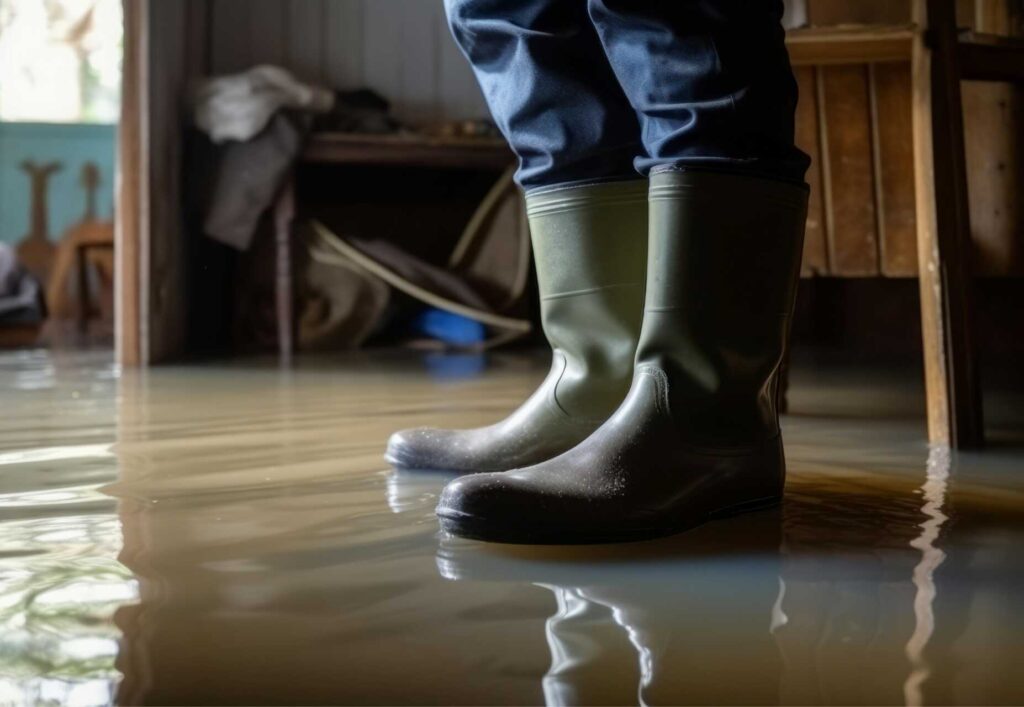
Contents
When flooding occurs, emergency water removal is vital to mitigate serious health risks and property damage. Standing water can quickly become a breeding ground for bacteria and mold, threatening both your health and the integrity of your home. By acting swiftly, you can protect your valuables and ensure a safer environment. Understanding the full scope of these dangers is essential to making informed decisions in the aftermath of a flood. What happens if you wait too long?
Key Takeaways
- Emergency water removal prevents the growth of harmful bacteria, viruses, and mold that thrive in standing water.
- Quick action reduces the risk of costly structural damage to property caused by prolonged exposure to moisture.
- It minimizes health risks associated with floodwater, including infections and gastrointestinal illnesses from contaminants.
- Professional services ensure thorough and efficient water removal, adhering to safety protocols to protect occupants.
- Immediate removal of water aids in preserving valuable items and documents from irreversible damage.
The Dangers of Standing Water After a Flood
After a flood, standing water poses significant dangers that can affect both health and property. You mightn’t realize that this stagnant water becomes a breeding ground for bacteria, viruses, and other pathogens, leading to serious health risks.
Exposure to contaminated standing water can result in infections, gastrointestinal illnesses, and even skin irritations. Additionally, standing water can weaken structural integrity, leading to costly damage to your property.
The flood consequences extend beyond immediate health concerns; prolonged exposure can also attract pests like mosquitoes, which complicates the situation even more. Moreover, if left unaddressed, standing water can seep into your foundation, increasing the risk of mold growth and long-term damage.
As a result, prompt action is essential to mitigate these risks and protect both your health and your investment. Understanding the dangers of standing water after a flood is vital for effective emergency response.
Preventing Mold Growth Through Immediate Water Removal
Standing water poses immediate health risks and sets the stage for mold growth if not addressed swiftly. To prevent this, you must implement effective mold prevention strategies immediately after flooding.
Removing standing water is your first step; it reduces moisture levels, which is essential for inhibiting mold spores from germinating.
Once the water’s gone, focus on moisture control techniques, such as employing dehumidifiers and ensuring proper ventilation. These methods decrease humidity levels, creating an environment that’s less favorable for mold development.
Additionally, inspect all surfaces for any residual dampness, as even small amounts can promote mold growth.
You should also consider using antimicrobial treatments on affected materials to further reduce risk. By taking these actions promptly, you greatly lower the chances of a mold infestation, protecting both your health and your property.
Protecting Your Property and Valuables From Further Damage
While immediate water removal is critical, you must also take proactive steps to protect your property and valuables from further damage.
This process is essential for effective property restoration and valuable preservation. Here are three key actions to evaluate:
Remove Valuables: Quickly relocate important documents, electronics, and personal items to a dry area. This minimizes the risk of irreversible damage.
Seal Openings: Use sandbags or other barriers to block potential water entry points in your property. This helps prevent additional flooding and protects your belongings.
Ventilate the Space: Open windows and doors to enhance air circulation. This reduces humidity levels and aids in drying out the property, minimizing the risk of mold growth and further deterioration.
Health Risks Associated With Floodwater Exposure
Floodwater can pose significant health risks, as it often contains a mixture of hazardous materials, pathogens, and debris. When you’re exposed to floodwater contaminants, you increase your chances of encountering various health hazards.
Bacteria, viruses, and parasites thrive in stagnant water, leading to infections and gastrointestinal issues if ingested or if they come into contact with open wounds.
Additionally, chemical pollutants from industrial sites or agricultural runoff can leach into floodwater, introducing toxic substances that may cause long-term health effects.
Mold growth can also result from prolonged exposure to wet environments, exacerbating respiratory issues and allergies.
It’s essential to recognize that even brief contact with contaminated water can lead to serious health complications.
Thus, minimizing exposure and seeking immediate medical attention for any symptoms is vital to safeguard your well-being after flooding.
The Importance of Professional Water Removal Services
After experiencing flooding, addressing the aftermath promptly is vital, especially regarding water removal. Relying on professional water removal services brings several advantages that enhance the recovery process.
Professional Expertise: Trained technicians possess the knowledge to assess damage accurately, making certain all affected areas are addressed.
Effective Techniques: Professionals utilize advanced equipment and techniques, such as industrial-grade pumps and dehumidifiers, to remove water quickly and thoroughly.
Preventing Further Damage: Swift action minimizes the risk of mold growth and structural damage, ultimately saving you time and money.
Engaging with professionals facilitates a more efficient recovery and assures that you’re following safety protocols.
Their specialized skills ensure that you restore your property effectively, returning it to its pre-flood condition.
Don’t underestimate the importance of expertise in steering through the complexities of water removal after flooding.
Summary
In the aftermath of flooding, you might hesitate to act quickly, thinking you can handle it yourself. However, the risks posed by standing water, like mold growth and health hazards, underscore the urgency of professional water removal. By prioritizing immediate action, you protect your property and valuables and ensure a safer environment for yourself and your loved ones. Don’t underestimate the long-term consequences; investing in expert services can save you from greater costs and complications.
Recent Posts
Master Flood Recovery: Test Your Water Removal Skills
Many people underestimate the complexity of flood recovery, often thinking it’s just about removing water.
Quick Tips for Post-Flood Water Removal
After a flood, knowing how to act quickly can make a big difference. You need
10 Best Tips for Emergency Water Removal After Flooding
You might think that dealing with flooding is overwhelming, but taking swift action can greatly
